Abstract
STUDY OBJECTIVES: To describe the utilisation of reproductive health services (family planning, antenatal care, and delivery services) and the socioeconomic determinants for utilisation of health services. DESIGN: This was a cross sectional survey, using a multistage sampling technique. SETTING: Tien Hai district, Thai Binh Province, Vietnam. Altogether 1132 mothers with children under 5 years of age were interviewed about antenatal, delivery, and family planning services utilisation during a five year period (1987-92). MAIN RESULTS: Seventy per cent of the women used contraceptive methods, with the intrauterine device being the most common. The use of the intrauterine device was positively associated with the number of children alive but not with other sociodemographic factors in the mothers. Thirty per cent of the women had attended an antenatal clinic for check ups during their last pregnancy. It was found that mothers with fewer deliveries, higher education, and who were Buddhist or of no religion had utilised antenatal services more frequently than the others. Seventy five per cent of the mothers in this study had been assisted by health professionals at their last delivery. Those mothers with fewer deliveries, higher education, who were Buddhist or had no religion, and had sufficient to eat were more likely to have their births attended by health professionals. CONCLUSIONS: In spite of a relatively high education level in the population and services which are generally available, there was an under utilisation of antenatal and delivery care and there was no equal opportunity for different groups of mothers to use these services. Family planning services were, however, frequently used and were used to the same extent by different groups of mothers. Except for abortion, alternatives to the intrauterine device method were rarely available. If pregnancies are to be protected in an efficient way in rural Vietnam, reproductive health care must be strengthened and efforts should be made to reach the women who are not using these services at present.
Full text
PDF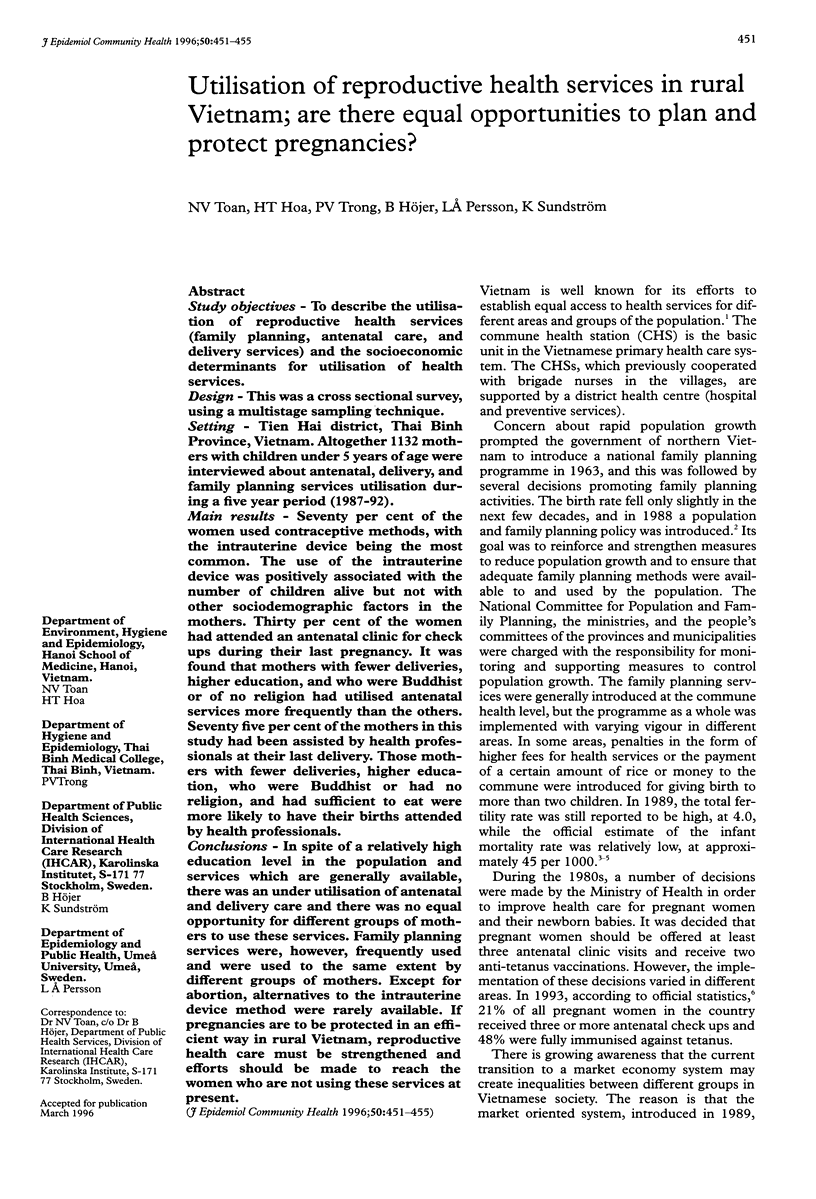
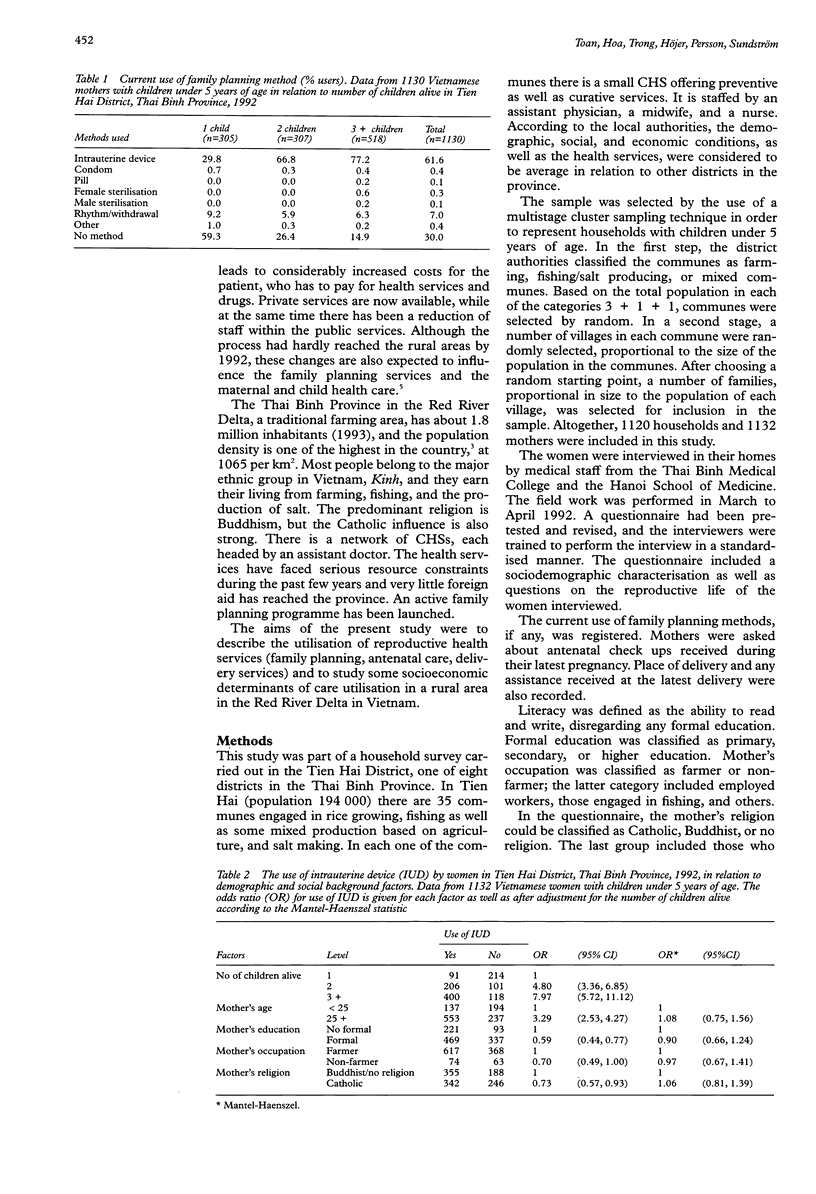
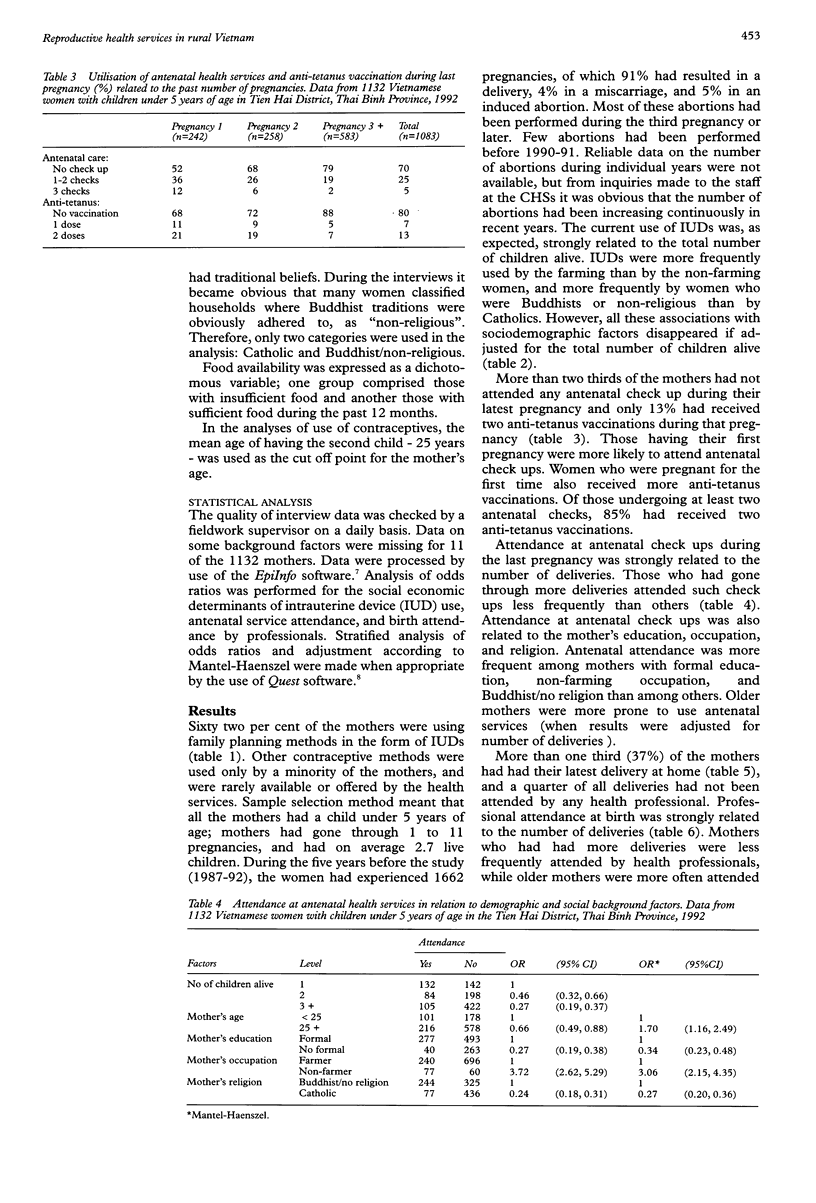
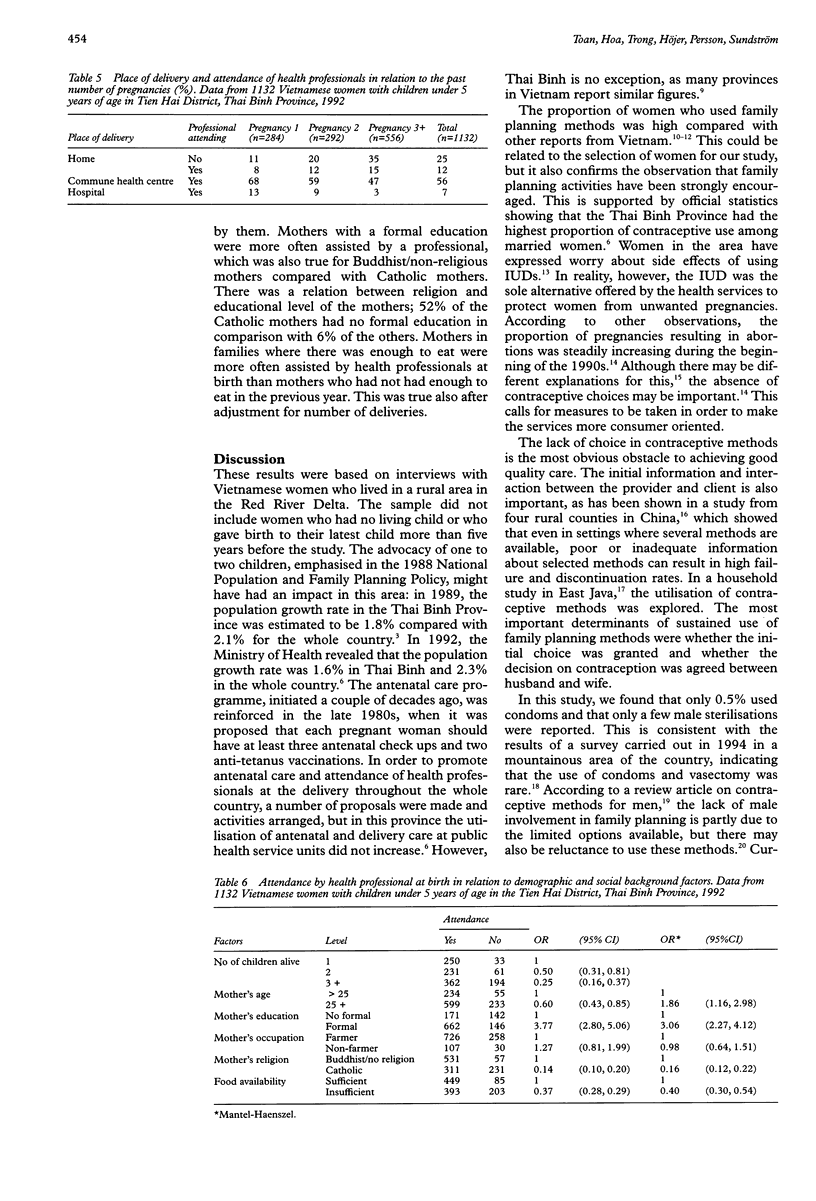
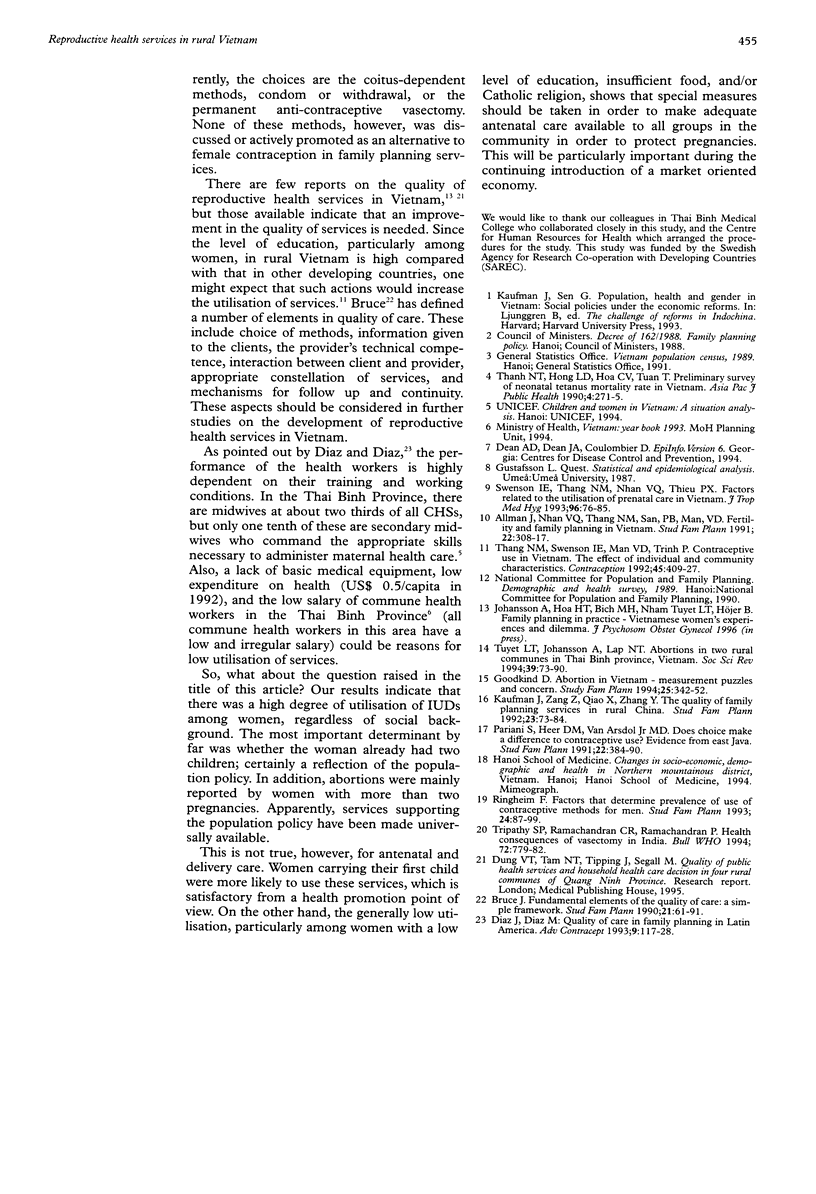
Selected References
These references are in PubMed. This may not be the complete list of references from this article.
- Bruce J. Fundamental elements of the quality of care: a simple framework. Stud Fam Plann. 1990 Mar-Apr;21(2):61–91. [PubMed] [Google Scholar]
- Díaz J., Díaz M. Quality of care in family planning in Latin America. Adv Contracept. 1993 Jun;9(2):117–128. doi: 10.1007/BF01990142. [DOI] [PubMed] [Google Scholar]
- Goodkind D. Abortion in Vietnam: measurements, puzzles, and concerns. Stud Fam Plann. 1994 Nov-Dec;25(6 Pt 1):342–352. [PubMed] [Google Scholar]
- Kaufman J., Zhang Z., Qiao X., Zhang Y. The quality of family planning services in rural China. Stud Fam Plann. 1992 Mar-Apr;23(2):73–84. [PubMed] [Google Scholar]
- Nguyen M. T., Swenson I. E., Vu D. M., Phan T. Contraceptive use in Vietnam: the effect of individual and community characteristics. Contraception. 1992 May;45(5):409–427. doi: 10.1016/0010-7824(92)90155-m. [DOI] [PubMed] [Google Scholar]
- Pariani S., Heer D. M., Van Arsdol M. D., Jr Does choice make a difference to contraceptive use? Evidence from east Java. Stud Fam Plann. 1991 Nov-Dec;22(6):384–390. [PubMed] [Google Scholar]
- Ringheim K. Factors that determine prevalence of use of contraceptive methods for men. Stud Fam Plann. 1993 Mar-Apr;24(2):87–99. [PubMed] [Google Scholar]
- Swenson I. E., Thang N. M., Nhan V. Q., Tieu P. X. Factors related to the utilization of prenatal care in Vietnam. J Trop Med Hyg. 1993 Apr;96(2):76–85. [PubMed] [Google Scholar]
- Thanh N. T., Hong L. D., Hoa C. V., Bieu N. V., Thieu D. D., Hieu B., Tuan T. Preliminary survey of the neonatal tetanus mortality rate in Vietnam. Asia Pac J Public Health. 1990;4(4):271–273. doi: 10.1177/101053959000400417. [DOI] [PubMed] [Google Scholar]
- Tripathy S. P., Ramachandran C. R., Ramachandran P. Health consequences of vasectomy in India. Bull World Health Organ. 1994;72(5):779–782. [PMC free article] [PubMed] [Google Scholar]


